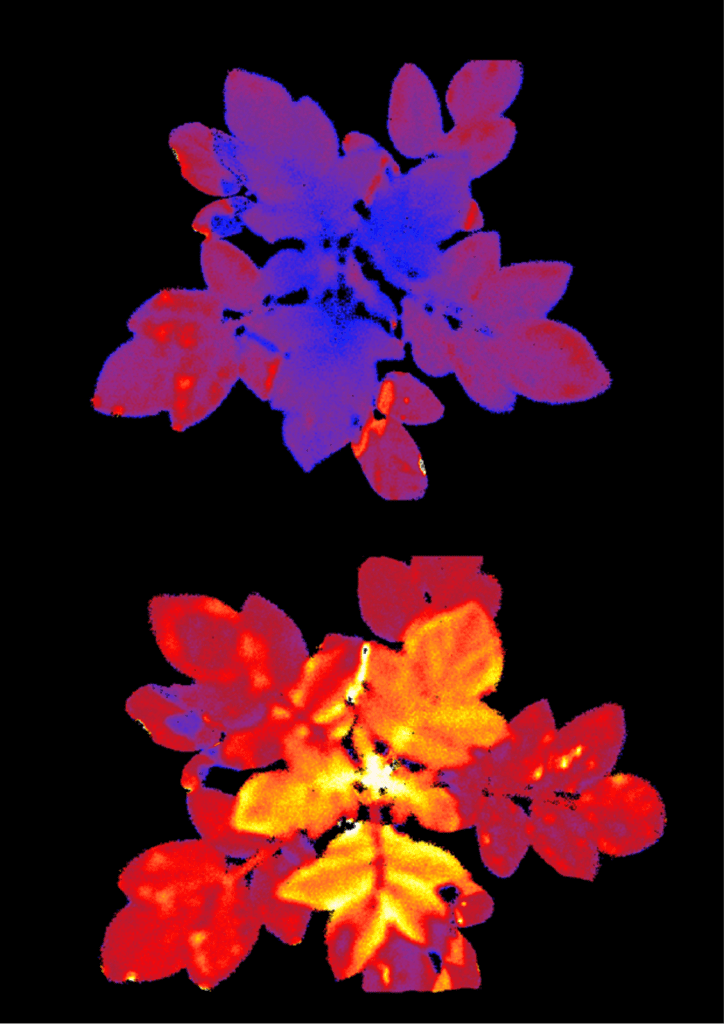
Israeli researchers find way to detect if potatoes are stressed
We tend to take the lowly potato – a perennial root vegetable that grows in the earth, is available year-round and is known by its Latin name Solanum tuberosum – for granted. A root vegetable from the nightshade famnily native to the Americas, the potato provides essential nutrients such as dietary fiber, vitamins, minerals, protein and antioxidants.
Native to the Americas, the wild potato originated in modern-day Peru and were domesticated between 7,000 and 10,000 years ago there, but were introduced to Europe from the Americas by the Spanish only in the second half of the 16th century. Following millennia of selective breeding, there are now over 5,000 different types of potatoes. Today, potatoes are the world’s fourth-largest food crop after corn, wheat and rice.
Environmental stresses are among the major factors that limit crop productivity and plant growth. Various nondestructive approaches for monitoring plant stress states have been developed, but early sensing of the initial biochemical events during stress responses remains a significant challenge.
In an effort to increase agricultural productivity and limit waste, a team of researchers from the Smith Faculty of Agriculture, Food and Environment at the Hebrew University of Jerusalem (HUJI) developed a method to detect signs of stress before agricultural plants are damaged.
Plants are exposed to all types of weather and other external factors that cause harm and impact plants’ ability to undergo photosynthesis and produce fruit. If farmers could get an early warning sign that their plants weren’t doing well, this would help them take measures to protect their produce, prevent significant losses and safeguard national food sources.
In new research published in Plant Physiology under the title “Sensing stress responses in potato with whole-plant redox imaging” by Matanel Hipsch under the direction of Dr. Shilo Rosenwaser at HUJI’s department of plant sciences, the scientists have introduced molecular bio-sensors within potatoes that allow for real-time monitoring of stress signals within the plants.
The study’s objective was to develop an innovative technique that allowed for early detection of stress and under-nutrition without damaging the plant itself. The researchers chose to focus on the humble potato, as a major food crop that comprises two-fifths of Israel’s exports and is vital for worldwide food security.

Imaging of stress responses in potato plants – courtesy Shilo Rosenwasser
By using genetic engineering, the team introduced a new gene coded to a fluorescent protein that reports the level of reactive oxygen species –highly reactive molecules that their accumulation signifies stress responses. The biosensor was targeted into the chloroplast – the organelle within the cell that is responsible for photosynthesis – the chemical process that transfers light into the energy to power plant growth. The researchers were then able to monitor the light emitted from the biosensors and determine the initial phase of plant stress responses.
“By using a fluorescent camera with extremely high sensitivity, we were able to monitor the fluorescence signals emitted from the biosensors and noticed the accumulation of reactive oxygen species during the early phase responses to stress conditions such as drought, extreme temperature, and high light,” explained Rosenwaser.
The researchers believe the application of biosensors can be expanded to other key crops—an effort that will help stem the tide of food insecurity and crop failures due to climate changes worldwide.
Israel in the News